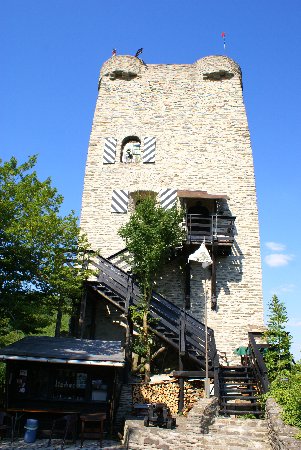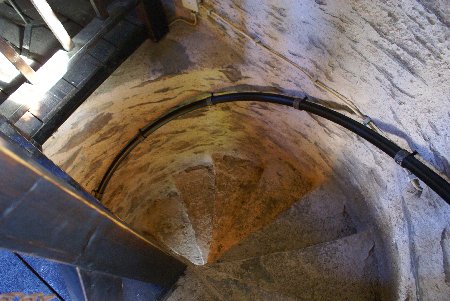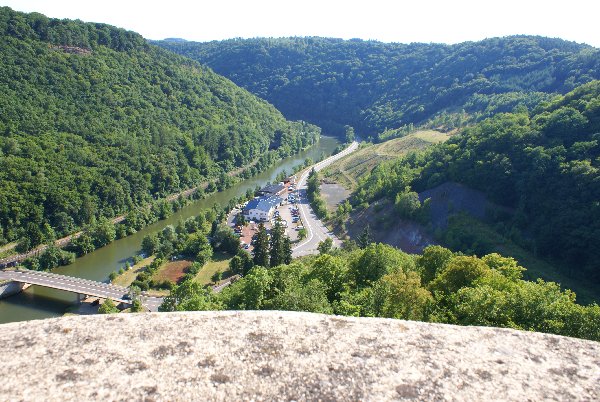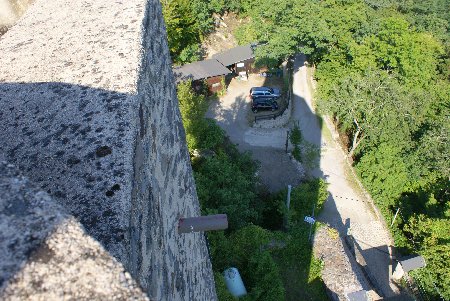Laurenburg
Laurenburg received its first mention in documents dated 1093 when a member of the family was listed in a legal document founding a local abbey. The keep was probably constructed about the same time by this Count Dudo-Henry von Laurenburg, who is considered to be the founder of the Nassau family dynasty. This family established their seat on the Lahn River in the early 1100s. During the Thirty Years War, Peter Melander, a commoner elevated to noble status, gained possession of the Esterau, the district for which Lauenburg served as the governmental seat. During this time the castle was destroyed and only the keep remained essentially intact. It was later occupied briefly by French troops in the early 1700s.
Today the keep houses a military museum.







Left, that is no optical illusion you see! Yes, Laurenburg has a keep that has walls bulging outward as they go up. I have never seen another keep with this unique design, though I'm sure there's one out there somewhere. This makes this particular castle very unique.
As for Melander, he attempted to revive a "German only" military movement near the end of the Thirty Years War, finding himself confronted by the combined Swedish and French forces led respectively by Gustav Wrangel and Viscomte Turenne, the latter one of the most brilliant generals of his age. While the allied armies camped in Schwabia near Reutlingen, Melander dug his force in along the Donau River near Zusmarshausen. Surprised, Melander tried to withdraw and the force was virtually overrun in the process. During the rearguard action Melander was mortally wounded.
Photos taken in 2008
Above, what is left of one of the entrances.
Right, a view of the keep with its restored wooden stairway leading into the main entrance. Like virtually all keeps, the entrance was typically about halfway up the length of the tower. The lower portion was used for storage and the cistern while the living quarters were above. The entrance could be easily defended in this manner.
Right, a view of the restored spiral stairway. Note the central "I-Beam" that supports the new concrete steps. While new, the steps still largely recreate what was once extant.
Below, a view from the top of the keep along the Lahn River looking west.
Looking down from the keep towards the main gate and the parking area. The surrounding grounds are not very well kept, but the keep itself is very interesting to view though of little direct historical relevance as to the history of the castle.